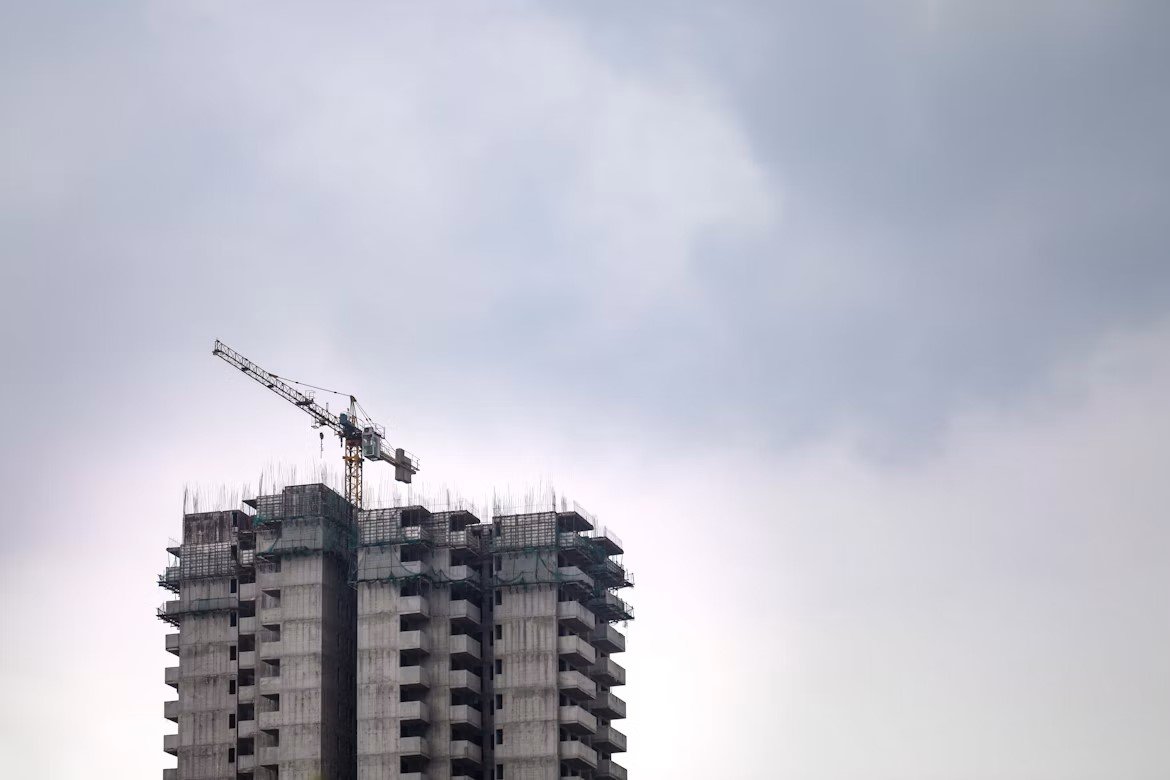
Why Canada’s Housing Crisis Is Getting Worse: The Real Story Behind Housing Starts and Supply
Despite rising demand, Canada’s housing supply continues to fall short — and new construction isn't keeping pace. This article dives into the root causes behind declining housing starts, delayed projects, and broken policy pipelines, revealing why the housing crisis in Canada is deepening in 2025 and what it means for homebuyers and renters.
The Canadian housing crunch isn’t just about high prices—it’s about not building enough homes.
There’s been a lot of talk about rising home prices, bidding wars, and frustrated first-time buyers in Canada. But behind all these surface-level issues lies a deeper problem: our housing supply simply isn’t keeping up with the number of people who need a place to live. Whether you’re a young family trying to buy your first home or a newcomer settling into a new city, this imbalance is being felt across the country.
In this article, we break down what’s really going on with housing starts and how they’re impacting overall housing supply in Canada. We’ll also look at how this affects affordability, what challenges builders are facing, and what needs to change for Canadians to actually be able to buy homes again.
What Are Housing Starts? And Why Should You Care?
Housing starts refer to the beginning phase of residential construction. In simple terms, it’s when the concrete foundation gets poured and a home is officially underway. It’s the most direct sign that homes are physically being built—not just planned or approved, but actually happening.
Canada Mortgage and Housing Corporation (CMHC) tracks this data closely, and for good reason. Housing starts are a pulse check on how well the housing market is responding to growing demand.
Historically, Canada has averaged around 191,000 housing starts per year between 1977 and 2023. While we hit a historic high in March 2021—mostly due to pandemic-delayed projects finally kicking off—that wasn’t sustained. And with demand growing at record levels, those one-off spikes aren’t nearly enough.
What’s Holding Housing Starts Back in Canada?
It’s not that builders have lost interest. In fact, many would love to put up more homes. But the system is bogged down by multiple roadblocks:
1. The Economy Isn’t Always Predictable
When the economy is doing well, confidence rises. Builders are more likely to invest in projects, buyers are more likely to commit to mortgages, and cities see more construction cranes. But if there’s even a hint of economic downturn—like whispers of a recession or inflation spikes—housing starts often slow down. Developers get cautious, buyers back off, and projects stall.
2. Immigration Is Soaring, But Supply Can’t Catch Up
Canada has set record-high immigration targets to support its aging population and workforce. In fact, we’re now welcoming around 500,000 newcomers every year. That’s great for the economy, but without building enough homes to house them, it puts tremendous pressure on the market. Economist Francis Gosselin put it bluntly: Canada is playing catch-up on housing after a pandemic pause—but it’s just not building fast enough.
3. Government Rules Are Slowing Things Down
Municipal red tape, outdated zoning bylaws, and restrictive land-use policies are making it harder to get housing projects approved. Even when developers are ready to build, navigating permits and local objections can take months—or even years. Unless cities streamline their processes, builders simply can’t keep up with demand.
| 📅 Year | 🏗️ Housing Starts (Units) | 📌 Notable Events |
|---|---|---|
| 1982 | 90,000 | Recession – Lowest on record |
| 1995 | 125,000 | Slow recovery period |
| 2005 | 225,000 | Strong pre-2008 demand |
| 2010 | 190,000 | Post-2008 recovery |
| 2019 | 208,000 | Stable pre-pandemic rate |
| 2020 | 185,000 | COVID disruption begins |
| 2021 | 321,000 | Pandemic bounce-back – Highest on record |
| 2022 | 260,000 | Demand sustained |
| 2023 | 240,000 | High immigration pressure |
| 2024 (est.) | 220,000 | Policy delays, high rates |
| 2025 (forecast) | 230,000 | Modest recovery expected |
Why Housing Supply Still Falls Short (Even When We Build)
Even when housing starts pick up, it doesn’t always translate into real progress for buyers. That’s because housing supply—the number of actual homes available for people to live in—still isn’t increasing fast enough to meet demand.
According to CMHC, Canada needs an additional 3.5 million homes by 2030 just to restore affordability to 2004 levels. That’s on top of what we’re already building. In other words, if we keep going at our current pace, we’re falling further behind every year.
The issue is particularly dire in provinces like Ontario and British Columbia, where demand is skyrocketing. Even provinces like Alberta and Quebec, which were keeping up better in recent years, are starting to see a growing gap.
| 📍 Province | 🏘️ Estimated Shortfall (2025) | 🎯 2030 Target (New Units) | 📊 Status |
|---|---|---|---|
| Ontario | +1.5 million | 2.1 million | Severely Behind |
| British Columbia | +610,000 | 820,000 | Behind |
| Quebec | +450,000 | 620,000 | Moderate Progress |
| Alberta | +320,000 | 470,000 | On Track |
| Manitoba | +90,000 | 125,000 | Lagging |
| Saskatchewan | +60,000 | 85,000 | Lagging |
| Nova Scotia | +50,000 | 72,000 | Behind |
| New Brunswick | +40,000 | 65,000 | Behind |
| Newfoundland & Labrador | +30,000 | 45,000 | Behind |
| Other Territories | +15,000 | 25,000 | Behind |
What This Means for Canadian Homebuyers
If you’ve tried buying a home lately, you already know what this looks like on the ground.
1. Homes Are Too Expensive
Limited supply plus high demand equals higher prices. It’s not just a math equation—it’s your reality if you’re trying to buy a home in a major Canadian city. With more buyers chasing fewer listings, sellers are holding all the power.
2. Bidding Wars and Overpaying
Lack of supply often leads to bidding wars, even on average homes. People end up paying more than asking price, sometimes making emotional decisions just to “win” a house. This only pushes prices higher and raises the risk of buyer’s remorse.
3. Fewer Choices, More Pressure
Low inventory means buyers often have to settle for less—whether it’s a longer commute, a smaller home, or a fixer-upper. And because homes are snatched up quickly, there’s little time to weigh your options. The result? Compromises and regrets.
📋 Why First-Time Buyers Feel Trapped in Today’s Market
😕 Emotional Snapshot
- “Prices are too high!”
- “Bidding wars everywhere…”
- “Even with two incomes, we can’t afford a down payment.”
- “We’ve been saving for years — and still feel stuck.”
🔍 Top 5 Reasons First-Time Buyers Feel Trapped
- 🏠 Low Supply: Too few homes on the market = limited choices.
- 💰 High Prices: Home prices have far outpaced wage growth.
- 📈 Rising Rents: It’s harder to save when rent is rising too.
- 💳 Debt Loads: Student loans and car loans limit mortgage approvals.
- 📉 Tougher Rules: Stress tests and lender restrictions are hurdles.
📌 Real-World Impact
- “We keep looking… but get outbid every time.”
- “We had to move 2 hours outside the city to afford anything.”
- “Even with a stable job, I can’t get pre-approved.”
✅ What Can Help?
- More housing supply
- First-time buyer support programs
- Longer amortization options
- Government-backed low-interest mortgages
- Down payment assistance
Don’t go it alone. Talk to a Mortgage Expert Today – We’ll guide you through every step.
So… How Do We Fix This?
Solving Canada’s housing crisis isn’t simple, but here’s where we can start:
1. The Government Needs to Step Up
Policymakers have the power to fix red tape. They can also offer tax breaks or financial incentives for developers who build faster—or who focus on affordable housing. Opening up federal land for construction or easing height restrictions in dense urban cores would also go a long way.
2. Build Smarter, Faster
The construction industry is slowly shifting toward modular building and pre-fab homes, which are quicker to put together and often more affordable. Scaling these innovations could help add units to the market faster and at lower cost.
3. Prioritize Affordable Housing
Inclusionary zoning laws—which require a percentage of new builds to be priced below market value—are gaining traction. Governments can also support non-profit and co-op housing models that prioritize affordability over profit.
📌 3 Things That Could Double Canada’s Housing Output by 2030
1️⃣ Streamline Municipal Approvals
Delays in zoning, permitting, and land-use approvals are major bottlenecks. If cities adopted fast-track digital processes and removed outdated zoning barriers, home construction could speed up dramatically across urban and suburban areas.
2️⃣ Incentivize Private Builders for Affordable Housing
Federal and provincial programs offering tax breaks, subsidies, or bonus density in exchange for building affordable units would motivate developers to scale construction. Partnerships between government and builders can fill the “missing middle.”
3️⃣ Embrace Modular and Prefabricated Construction
Off-site, factory-built housing can be assembled quickly and cost-effectively. By modernizing building techniques and scaling prefab capacity, Canada can produce more homes in less time—especially in areas facing labour shortages.
What’s the Housing Outlook for Canada in 2025?
The next year or two could go either way. While most experts don’t expect a housing crash, market volatility is likely—especially with interest rates holding steady, buyer sentiment fluctuating, and foreign investment rules evolving.
The good news? With rates stabilizing, mortgage payments may become more predictable, giving first-time buyers slightly more leverage. But unless a major effort is made to boost housing supply, affordability will remain a struggle.
| 📅 Year | 📈 Projected Demand (Units) | 🏗️ Actual/Projected Supply (Units) | 📉 Annual Gap |
|---|---|---|---|
| 2023 | 420,000 | 240,000 | -180,000 |
| 2024 | 430,000 | 230,000 | -200,000 |
| 2025 | 450,000 | 240,000 | -210,000 |
| 2026 | 470,000 | 260,000 | -210,000 |
| 2027 | 480,000 | 275,000 | -205,000 |
| 2028 | 490,000 | 300,000 | -190,000 |
| 2029 | 500,000 | 325,000 | -175,000 |
| 2030 | 510,000 | 350,000 | -160,000 |
Frequently Asked Questions
Is there really a housing shortage in Canada?
Yes. Demand is outpacing construction, especially in large urban centres, causing prices to surge.
Why isn’t Canada building more homes?
Red tape, rising costs, and workforce shortages all contribute to the slowdown.
Will homes ever become affordable again?
Affordability can return—but only if government policy, construction innovation, and market demand align.
Should I buy now or wait?
If you’re financially ready, 2025 may be a good time to lock in stable rates and avoid further price increases. But always make a move that fits your budget.
Final Thoughts: It’s Not Just About Building More—It’s About Building Smarter
The housing crisis in Canada isn’t going away on its own. We need urgent, coordinated action across all levels of government, construction, and community planning. More importantly, we need to shift the conversation—from short-term affordability fixes to long-term housing sustainability.
Whether you’re a buyer, builder, policymaker, or simply someone watching from the sidelines, one thing is clear: Canada’s housing system needs a reset. Because the way things are going, we’re building dreams slower than we’re creating them.
🏡 Find Out How Much Home You Can Afford
Speak with a trusted Canadian mortgage expert and take the guesswork out of home buying.
Talk to a Mortgage Expert TodayStuck with a Mortgage Decision?
Don’t stress — our team is here to help. Reach out for free, no-obligation guidance.
Contact the Experts



